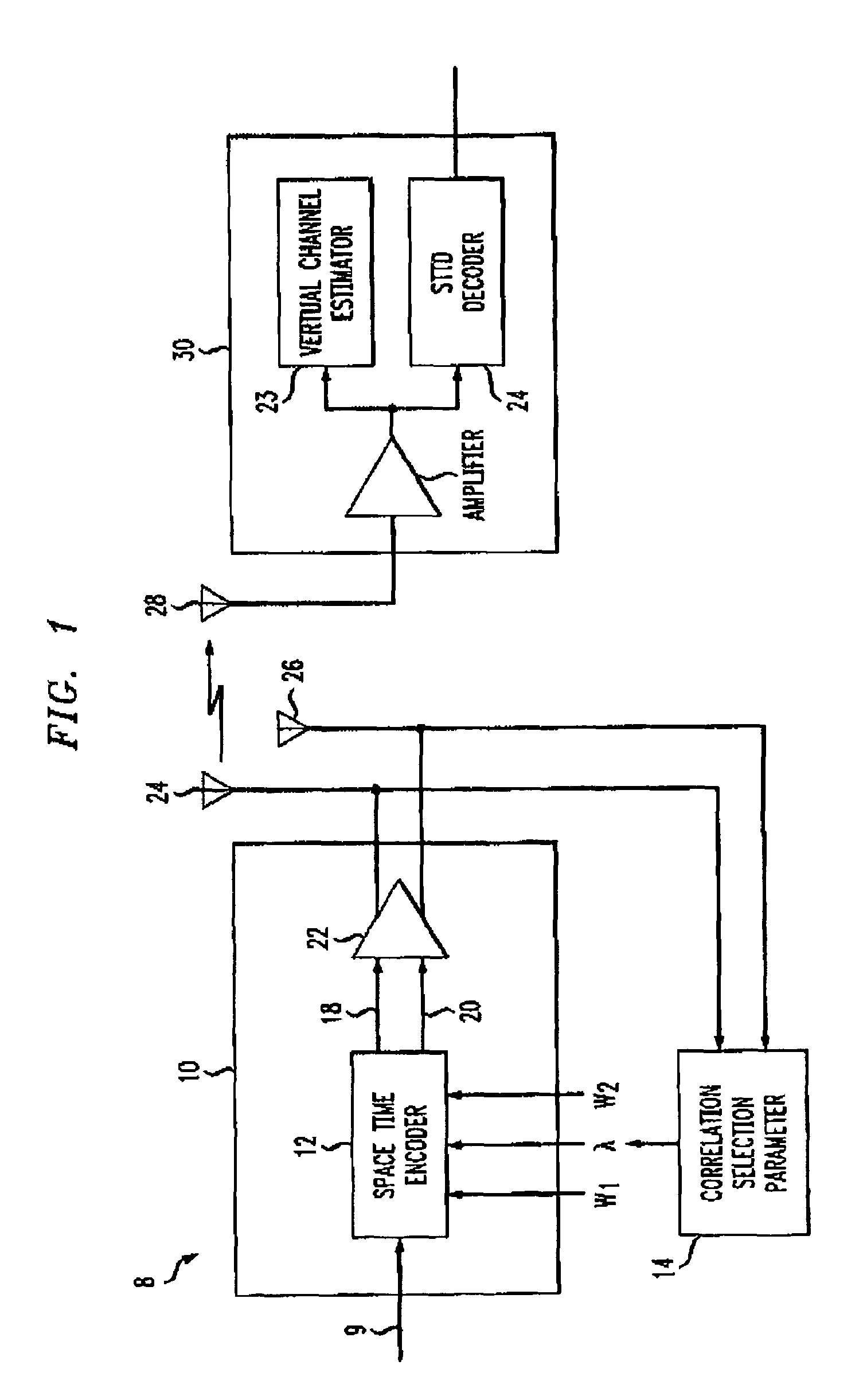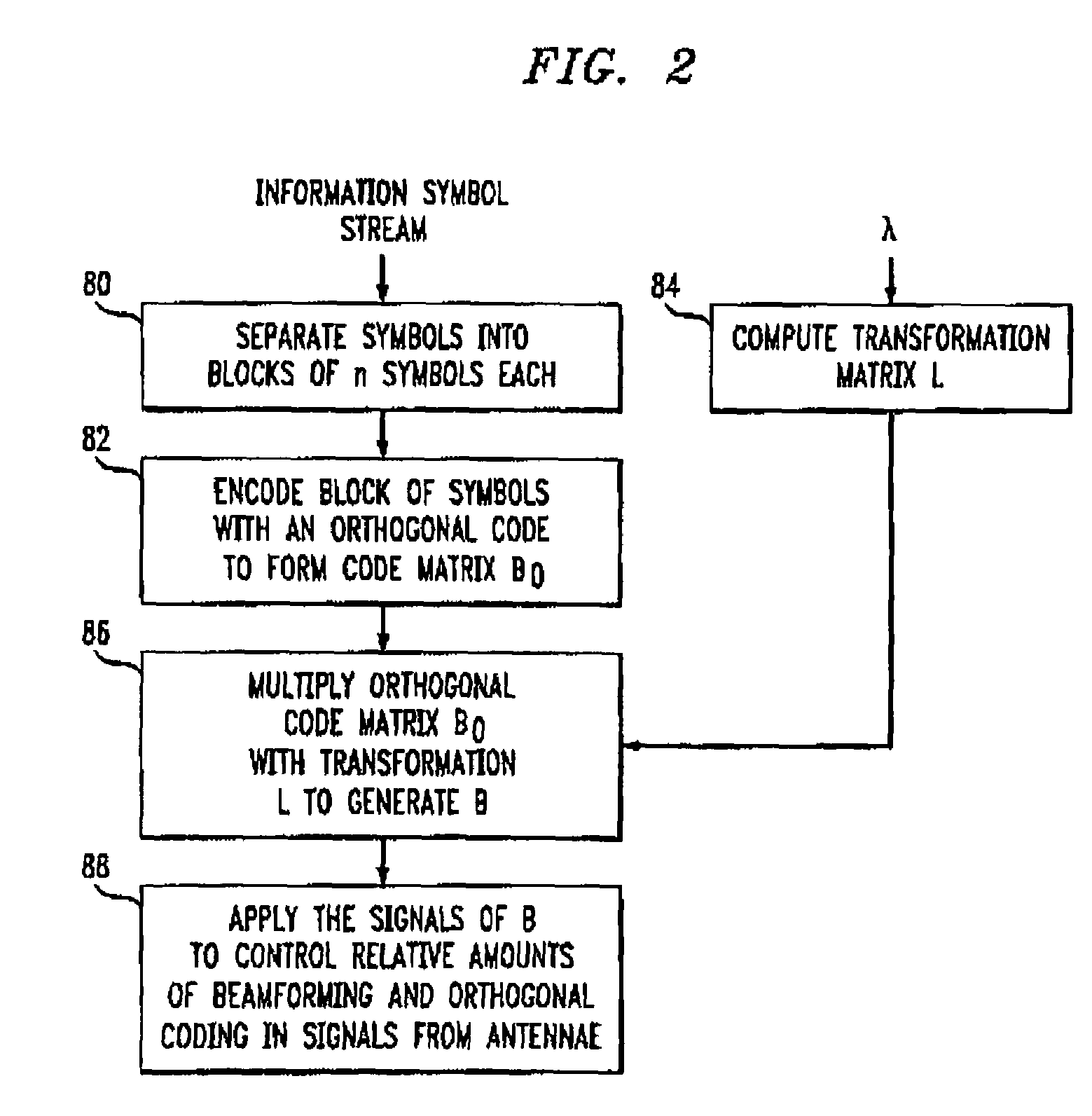Method for multiple antenna transmission
a transmission method and antenna technology, applied in diversity/multi-antenna systems, electromagnetic wave modulation, modulation, etc., can solve the problems of difficult to obtain similar improvements on the downlink, difficulty in using multiple antennas at the mobile handset, and large need to provide increased data rates to a large number of users
- Summary
- Abstract
- Description
- Claims
- Application Information
AI Technical Summary
Problems solved by technology
Method used
Image
Examples
Embodiment Construction
[0017]Beamforming and orthogonal space-time coding (such as space time transmit diversity (STTD) or a variant of STTD) are two methods being studied for transmission using multiple antennas due to the potentially significant diversity and / or array gains that can be obtained. With beamforming, the signals transmitted by the different antennae differ only by a complex scaling factor, designed such that the signals add constructively at the intended receiver. With orthogonal space-time coding, the signals transmitted by the different antennae are orthogonal, in order to allow their independent demodulation.
[0018]Beamforming and orthogonal coding are representative of two very different methods used for multiple antenna transmission. Beamforming relies completely on correct channel knowledge at the transmitter whereas orthogonal coding ignores any channel information the transmitter may have. In practice, the transmitter often has some instantaneous or average knowledge of the channel, ...
PUM
 Login to View More
Login to View More Abstract
Description
Claims
Application Information
 Login to View More
Login to View More - R&D
- Intellectual Property
- Life Sciences
- Materials
- Tech Scout
- Unparalleled Data Quality
- Higher Quality Content
- 60% Fewer Hallucinations
Browse by: Latest US Patents, China's latest patents, Technical Efficacy Thesaurus, Application Domain, Technology Topic, Popular Technical Reports.
© 2025 PatSnap. All rights reserved.Legal|Privacy policy|Modern Slavery Act Transparency Statement|Sitemap|About US| Contact US: help@patsnap.com



